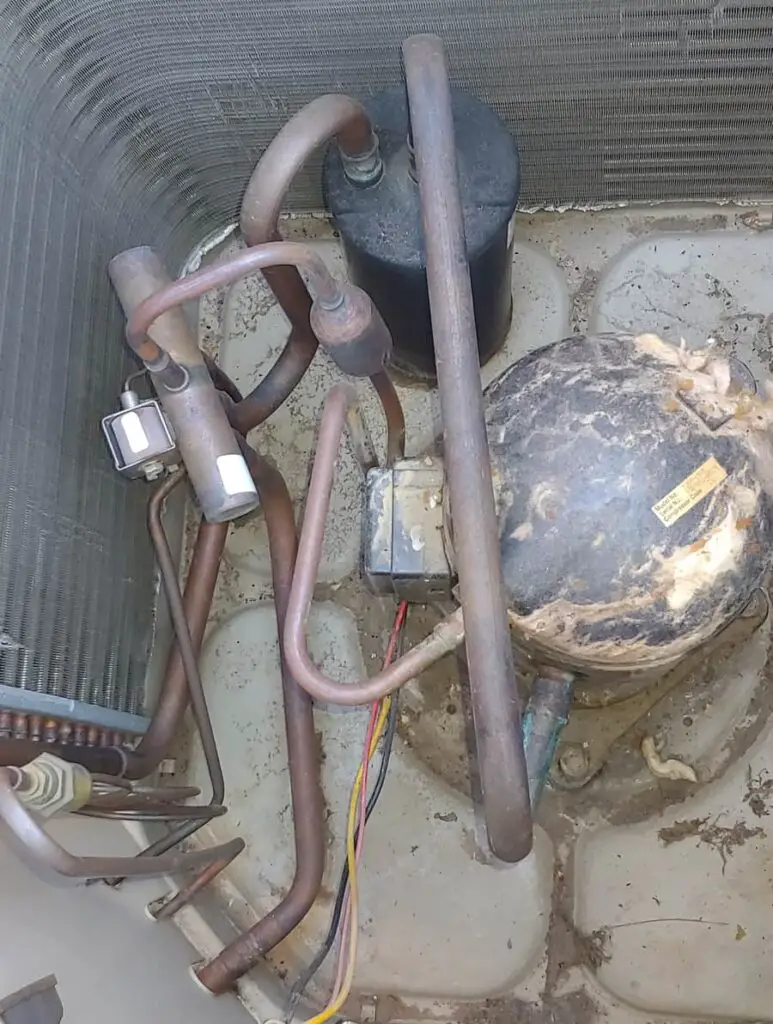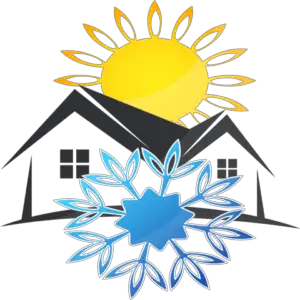I’ll explain three simple ways to reset your home’s HVAC system. But be ready; if these don’t work, you better be prepared to call a technician. Deep down in your gut, you probably know something is wrong, and that’s what you will have to do anyway. But it won’t hurt to try, right?
- Find an actual reset button.
- Switch off the thermostat, wait about 60 seconds, and turn it back on.
- Switch off all the breakers, wait about 60 seconds, and turn it back on.
How Do I Find An Air Conditioner’s Reset Button?
Reset buttons come on a lot of different appliances. Your air conditioner is an appliance, after all. It’s a unit that cools your home just like a refrigerator cools your food. The difficulty is finding that little reset button and if there even is one.
I’d be accurate in saying that most reset buttons are red and hiding in inconspicuous places. So, considering that most split system air conditioners or heat pumps have an indoor and an outdoor unit, your first tip in finding the reset button is to look around and in the outdoor unit.
Residential HVAC units also come in what are called “package units.” Package units are not split but are single units set outside, usually on a pad with attached ductwork that goes into the home. You see many package units in hotter climates like Arizona and Texas. A lot of those package units are on the roof.
Again, you have to look around and inside the unit. You may even have to remove a panel or two, especially the panels around the compressor.
Don’t All Air Conditioners Have A Reset Button?
Actually no! A reset button on an AC unit is essentially a manual pressure switch. Not all AC units have a reset button or pressure switches. Most have an automatic reset that looks like a pressure switch with no button.
I just replaced an old heat pump. The old unit is still (at this moment) sitting beside my shop. Looking inside, there are no pressure switches or reset buttons.

These pressure switches react to the sealed system’s low and high pressures that contain refrigerant or what most people know as Freon. So, as you know, Freon is a brand name. The generic name is “refrigerant”.
If a heat pump or AC system has a low-pressure switch and, for some reason, like a leak, it gets low on refrigerant, the low-pressure switch will shut down and protect the compressor.
If an outdoor unit has a high-pressure switch and the outdoor fan quits or the coil gets blocked so air can’t get through, the system will shut down because of the high pressure to protect the compressor. Heat pumps have other reasons that they may have high pressures, but I think I’ve covered the reasons for pressure switches.
These are auto-reset pressure switches. They look like a manual reset button but have no button. They will automatically reset when the pressures fall within their parameters, allowing a unit to cycle.
Will Switching Off The Thermostat Reset An Air Conditioner?
Turning off an HVAC system at the thermostat is not a recognized method to reset your air conditioner. Although it may cycle off and then on or come on depending on the present setting, you will not achieve any reset.
If your air conditioner or heat pump is off and not responding to the settings on your thermostat, and you cannot find one of those red buttons on the outdoor unit to push, then you have a problem that will require a service technician.
I often wondered why waiting a short time after turning off the power to my internet modem was important. It seems there are diodes, or maybe capacitors, that need a little time to bleed off before restarting.
I don’t claim to be an electrical engineer, so if you want to give this reset one last grand effort, wait a minute after turning off the unit at the thermostat and see what goes.
Will Switching Off The Breakers Reset My Air Conditioner?
You may have landed on something here that may have a chance of working, but not in the way you are thinking. I’ve seen breakers that look in the “on” position but are not supplying power to the unit.
Faulty breakers are a real thing. Breakers can fail in more than one way. If you suspect your problem is a breaker or the power going to your air conditioner, call your service provider and don’t take any unnecessary risks.
Many people are reluctant to pursue electrical troubleshooting and have little to no experience with those switches in their breaker panels. But no harm will come by taking a well-marked breaker indicating it is the AC or heat pump, toggling it off, and then back on and seeing the results.
No need to wait for 60 seconds for this test. If your thermostat says “cool on” and you switch that breaker to the outdoor unit off and then back on, you may get an instant reaction if that is the problem. If not, it could also be a fuse that most homeowners are unaware of, hiding in that box on the side of the house.
Don’t open the cover inside this disconnect unless you are familiar with electricity or are already immortal.
That box is called an outdoor disconnect. It has multiple purposes, but its main requirement is to provide a power cut-off for servicing the unit. Inside some of these outdoor disconnects could be a couple of fuses. If you’re the stubborn type and open the disconnect, then ensure the power is off at the indoor service panel.
The only way to know that the power is off is to have a meter and learn how to use it. The fuses can also be checked using a volt-ohm meter.
The fuses are not always required, so some are just a plug that pulls out to disconnect the unit’s power, or it could even be another breaker that you could play with, like the one inside.
